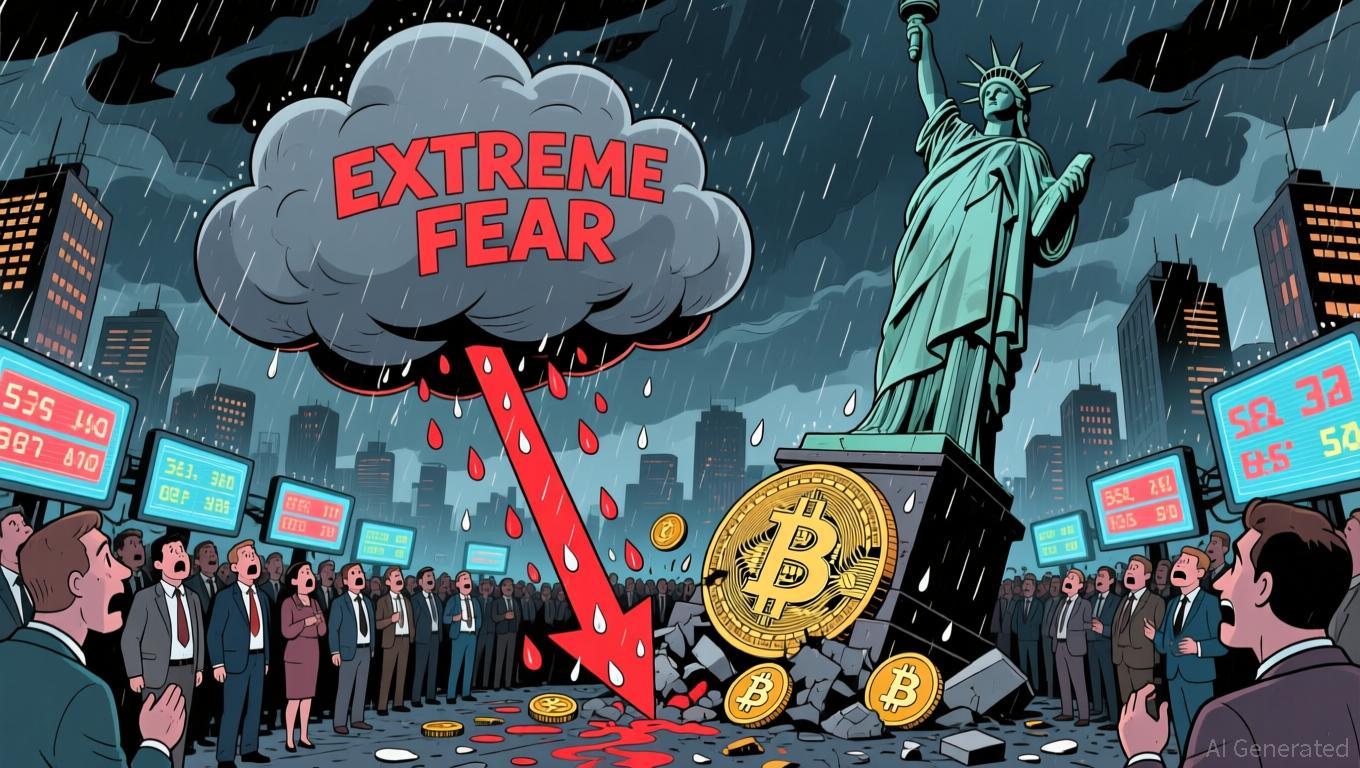Fed Policy Changes and Their Impact on Solana's Price Movements
- Fed's 2025 liquidity injections and leadership changes signal dovish shift, impacting global markets. - Solana's ecosystem benefits from increased liquidity, with TVL and transaction volume correlating to macro optimism. - Dovish signals drive capital toward risk-on assets like crypto, but inflation risks and policy uncertainty persist. - Fed's "barely restrictive" stance highlights balancing act between inflation control and systemic stability. - Investors must navigate macro-crypto linkages through div
Dovish Signals and Systemic Liquidity Pressures
Adding to the broader picture are leadership changes at the Federal Reserve, most notably

Macro-Crypto Linkages: Solana's Ecosystem Response
Although the Fed’s measures are mainly targeted at easing stress in traditional finance, their repercussions are felt in the crypto sector as well. Leading layer-one blockchains like Solana, which benefit from ample liquidity, have historically responded to shifts in monetary policy. While detailed on-chain data for Solana in November 2025 is not yet available, the general pattern suggests that increased liquidity often boosts demand for scalable blockchain solutions.
Dovish policy cues typically provide support for risk-oriented assets, including cryptocurrencies. As the Fed’s emergency actions help resolve liquidity shortages, investors may redirect funds toward sectors with high growth potential. Solana’s emphasis on rapid, affordable transactions and developer-friendly infrastructure makes it well-positioned to attract such investment. Additionally, the network’s total value locked (TVL) and transaction activity often rise in tandem with broader economic optimism, as observed during previous periods of liquidity expansion.
Strategic Implications for Investors
The relationship between Federal Reserve policy and the crypto market underscores the need for investors to understand macroeconomic trends when considering digital assets. Even indirect dovish signals can drive momentum in high-performance blockchain ecosystems by lowering the opportunity cost of riskier investments. For Solana, this translates to ongoing interest from both institutional and retail participants looking for scalable infrastructure.
Nonetheless, caution is warranted.
Conclusion
The Federal Reserve’s actions in November 2025—including emergency liquidity measures and leadership changes—indicate a subtle but important move toward a more accommodative policy stance. While these steps are largely precautionary, their effects on the crypto market, especially on high-performance networks like Solana, are significant. As liquidity dynamics shift, the ability to interpret macroeconomic developments and their impact on digital asset ecosystems will be crucial for successful investing in the year ahead.
Disclaimer: The content of this article solely reflects the author's opinion and does not represent the platform in any capacity. This article is not intended to serve as a reference for making investment decisions.
You may also like
Japan Unveils $110B Stimulus: Major Shift from Fiscal Restraint to Economic Expansion and National Security
- Japan's PM Sanae Takaichi unveils $110B stimulus to combat stagnation and bolster security amid China tensions. - Plan includes tax cuts, utility subsidies, defense spending, and strategic investments in AI, semiconductors , and shipbuilding. - Funded by 14-trillion-yen supplementary budget, with potential expansion to 20-trillion-yen ($133B) as per analyst estimates. - Shift from austerity reflects Takaichi's hardline security stance and response to China's travel advisory over Taiwan remarks. - Impleme

Bitcoin News Update: Bitcoin Reaches $96K Amidst Institutional Interest and Challenges from Regulations and Price Barriers
- Bitcoin surged past $96,000 as buyer accumulation and seller exhaustion drove short-term recovery, though $106,000–$118,000 remains a key resistance zone. - Harvard’s $443M investment in BlackRock’s IBIT highlights growing institutional adoption, contrasting traditional preferences for private equity. - Bitcoin Depot reported 20% Q3 revenue growth but faces regulatory challenges, expanding internationally while projecting Q4 declines due to compliance costs. - MicroStrategy’s Michael Saylor denied Bitcoi

Bitcoin News Today: Bitcoin Faces $62K Drop Threat Amid Fed's Data Silence Predicament
- Bitcoin faces $62K crash risk amid Fed uncertainty caused by U.S. government shutdown's "data blackout" disrupting inflation/labor data. - Post-Nov 13 reopening saw BTC rebound above $102K, but markets remain fragile with 20% decline from October peak despite $140B ETF growth. - Fed rate cut odds dropped to 52% for December, creating volatility as institutions like Harvard Endowment invest $443M in Bitcoin ETFs. - U.S. miners struggle with 37.75% global hashrate share amid lack of federal incentives, con

Bitcoin Updates Now: Crypto Faces a Standstill as Market Anxiety Meets Harvard’s Confident Bitcoin Investment
- Alternative Data's Fear & Greed Index hit record low 10 on Nov 16, signaling extreme crypto market fear and frozen investor sentiment. - Bitcoin fell 5% to $96,000 while CD20 lost 5.8% as profit-taking, liquidations, and liquidity declines accelerated selloffs. - Rising U.S. Treasury yields and central bank uncertainty worsened losses, with Nansen noting "perfect storm" of macro risks and institutional outflows. - Harvard's $443M IBIT ETF investment contrasts current bearishness, highlighting diverging i
